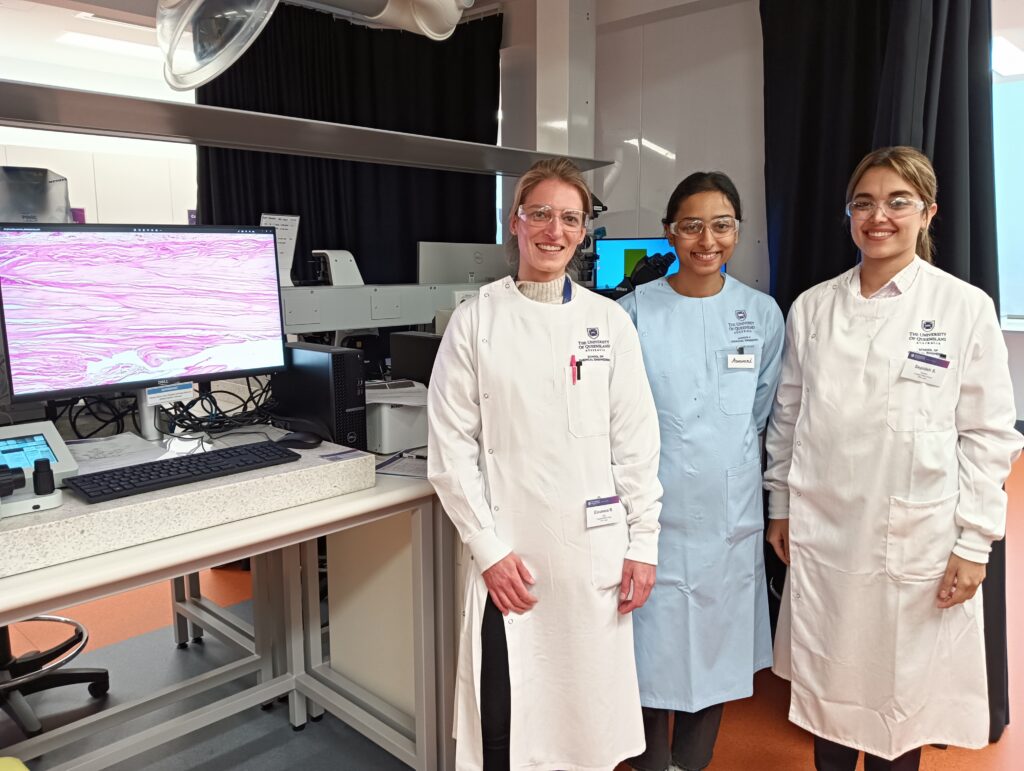
Fukuyo Japan Conference: Advancing Biomechanical Knowledge through Insightful Presentations.
The International Society of Biomechanics (ISB) Conference, hosted in Fukuoka Japan, brought together renowned scholars, young researchers, and enthusiastic learners in the field of biomechanics. Among the attendees, centre postdoc Dr Maxence Lavaill and PhD student Ms Yilan Zhang (UNSW) made notable contributions, presenting their research and gaining valuable insights into advancements in upper movement structures and musculoskeletal mechanics.
Dr Maxence Lavaill’s presentation, titled “Insights into the Different State-of-the-Art Optimisation Approaches for Solving the Shoulder Muscle Redundancy Problem,” was a significant highlight of the conference. Max provided an update on his ongoing research, shedding light on innovative optimization techniques used to address the complex issue of shoulder muscle redundancy. His presentation not only showcased his expertise, but his research offers further prospects for patient care for that struggle with muscle instability.
Yilan Zhang presented her research on “Muscle Volumes and Movement of Arms of Human Rotator Cuff Muscles In Vivo.” Her talk delved into the intricacies of rotator cuff muscle dynamics, contributing to our understanding of human movement and the complex interplay of musculoskeletal structures during arm motion. Yilan’s presentation showcased her knowledge in the field and contributes to the growing body of work aimed at understanding complex muscle interplay.
The conference also featured two esteemed keynote speakers, Professor Bill Sellers and Professor Julie Steele, who added a wealth of knowledge and insights to the event. Professor Bill Sellers, from the University of Manchester, is renowned for his groundbreaking work in using robotic simulation techniques to understand animal biomechanics. His presentation, “Animals as Machines: Robotic Approaches to Understanding Comparative Locomotor Mechanics,” demonstrated the application of machine learning in generating control systems that mimic the gait patterns of animals. Prof. Sellers’ work exemplifies the intersection of cutting-edge technology and biomechanics.
Professor Julie Steele, previously associated with the University of Wollongong, presented “Pioneering Women of ISB: Tales from the Archive and Beyond.” Her research has explored various aspects of biomechanics, from lower limb injuries due to high-impact landings to innovative wearable technologies for health applications. Additionally, her work has examined the effects of obesity, ageing, and occupational loading on lower limb structure and function, all with the aim of enhancing the quality of life. With a remarkable career marked by over 200 journal publications, Professor Steele’s insights and clear communication left a lasting impression on all attendees.
The ISB Fukuyo Japan Conference served as a significant platform for knowledge exchange, fostering a spirit of collaboration and innovation in the field of biomechanics. It exemplified how the collective efforts of researchers and scholars continue to push the boundaries of what we know and challenge us to think beyond the conventional limits of Biomechanics. It was a privilege for all attendees to gain insights from these remarkable presentations and to be part of this dynamic academic exchange. Overall, the team had a fantastic time meeting their international peers and networking with experts in the field of biomechanics for future innovative collaborations that transform orthopaedic techniques and outcomes.


























